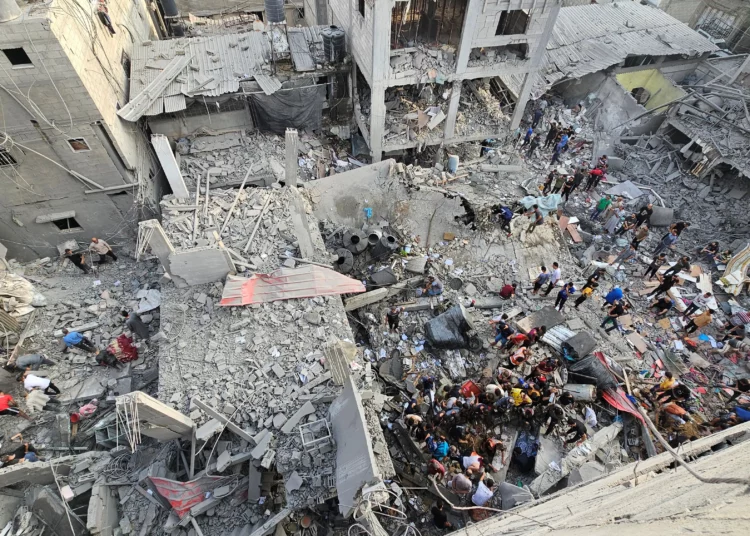United States President Donald Trump and Israeli Prime Minister Benjamin Netanyahu, on Monday, announced a US-backed peace proposal aimed at ending the nearly two-year-old war in Gaza, warning Hamas that rejection of the plan would leave Israel with Washington’s full support to continue its military campaign.
Speaking at a joint White House press conference, Trump said both leaders were “beyond very close” to a deal that could deliver what has long eluded the region. He thanked Netanyahu “for agreeing to the plan and for trusting that if we work together, we can bring an end to the death and destruction that we’ve seen for so many years, decades, even centuries, and begin a new chapter of security, peace and prosperity for the entire region.”
The White House simultaneously released a 20-point framework calling for a ceasefire, an exchange of hostages for Palestinian prisoners, a phased Israeli withdrawal from Gaza, Hamas disarmament, and the creation of a transitional government led by an international body.
Netanyahu, standing alongside Trump, said, “I support your plan to end the war in Gaza, which achieves our war aims. It will bring back to Israel all our hostages, dismantle Hamas’ military capabilities, end its political rule, and ensure that Gaza never again poses a threat to Israel.”
Yet, the central question remains Hamas’s response. The group, which was not part of the negotiations, still holds 48 hostages, 20 of them believed to be alive. “Hamas hasn’t yet received the plan officially, nothing beyond media publication,” a Hamas official told Reuters.
The plan, drafted by Trump’s special envoy Steve Witkoff and first-term adviser Jared Kushner, envisions a ceasefire followed by the release of hostages within 72 hours, in exchange for hundreds of Palestinian prisoners. Israeli forces would then gradually withdraw from Gaza. A temporary stabilization force led by Arab and international partners would take over security, with Gaza governed without Hamas involvement and only a limited role for a Palestinian Authority (PA) “representative.”
The roadmap also gestures toward eventual Palestinian statehood once Gaza’s reconstruction is under way and the PA enacts reforms. But the absence of a clear timeline and Netanyahu’s long-standing opposition to Palestinian statehood remain major obstacles. A source close to the talks acknowledged that the issue was one of the main sticking points to Netanyahu’s acceptance of Trump’s proposal.
Netanyahu praised Trump as “a friend of Israel” but carefully distanced himself from U.S. demands for PA reforms. The Israeli leader has consistently vowed not to allow the PA to control Gaza, despite its historic role in the 1993 Oslo Accords.
Trump, who campaigned in 2024 on a promise to end the Gaza war, has repeatedly claimed that a deal was close, only for negotiations to collapse. Monday’s announcement marks his most ambitious diplomatic push yet, following the presentation of the plan to Arab and Muslim states at the U.N. General Assembly last week.
The White House meeting also underscored the contrast in Netanyahu’s global standing: warmly received by Trump in Washington, but greeted with walkouts by dozens of delegates during his U.N. address just days earlier.
The war, triggered by Hamas’s October 7, 2023 assault that killed around 1,200 people and saw 251 hostages taken, has since claimed over 66,000 Palestinian lives, according to Gaza health authorities. Israel has launched one of its largest offensives of the conflict in recent weeks, with Netanyahu insisting the campaign will continue until Hamas is completely dismantled.
For now, the fate of Trump’s peace initiative hangs on whether Hamas is willing to engage. Without its acceptance, the latest U.S.-brokered effort risks the same fate as earlier failed ceasefire attempts.





